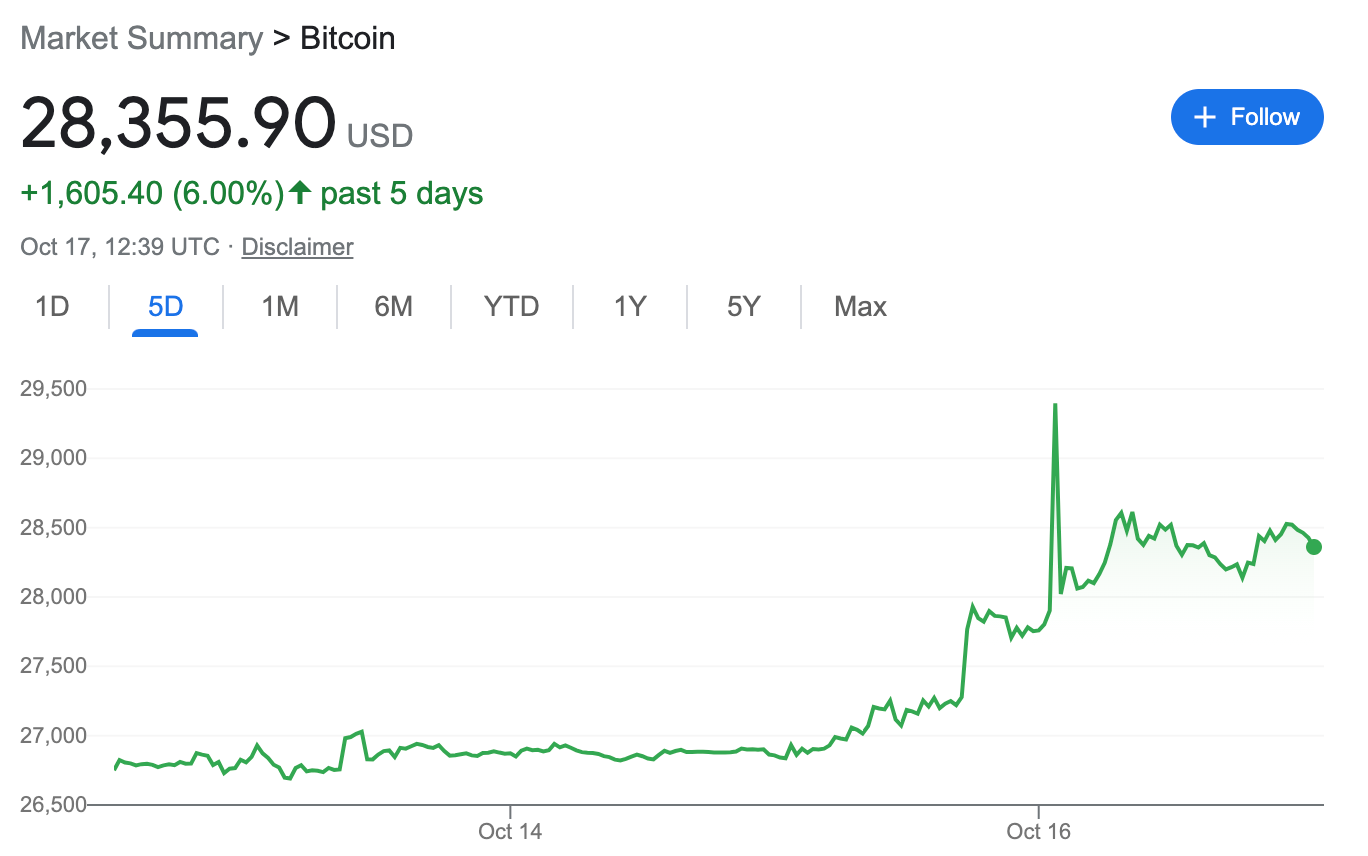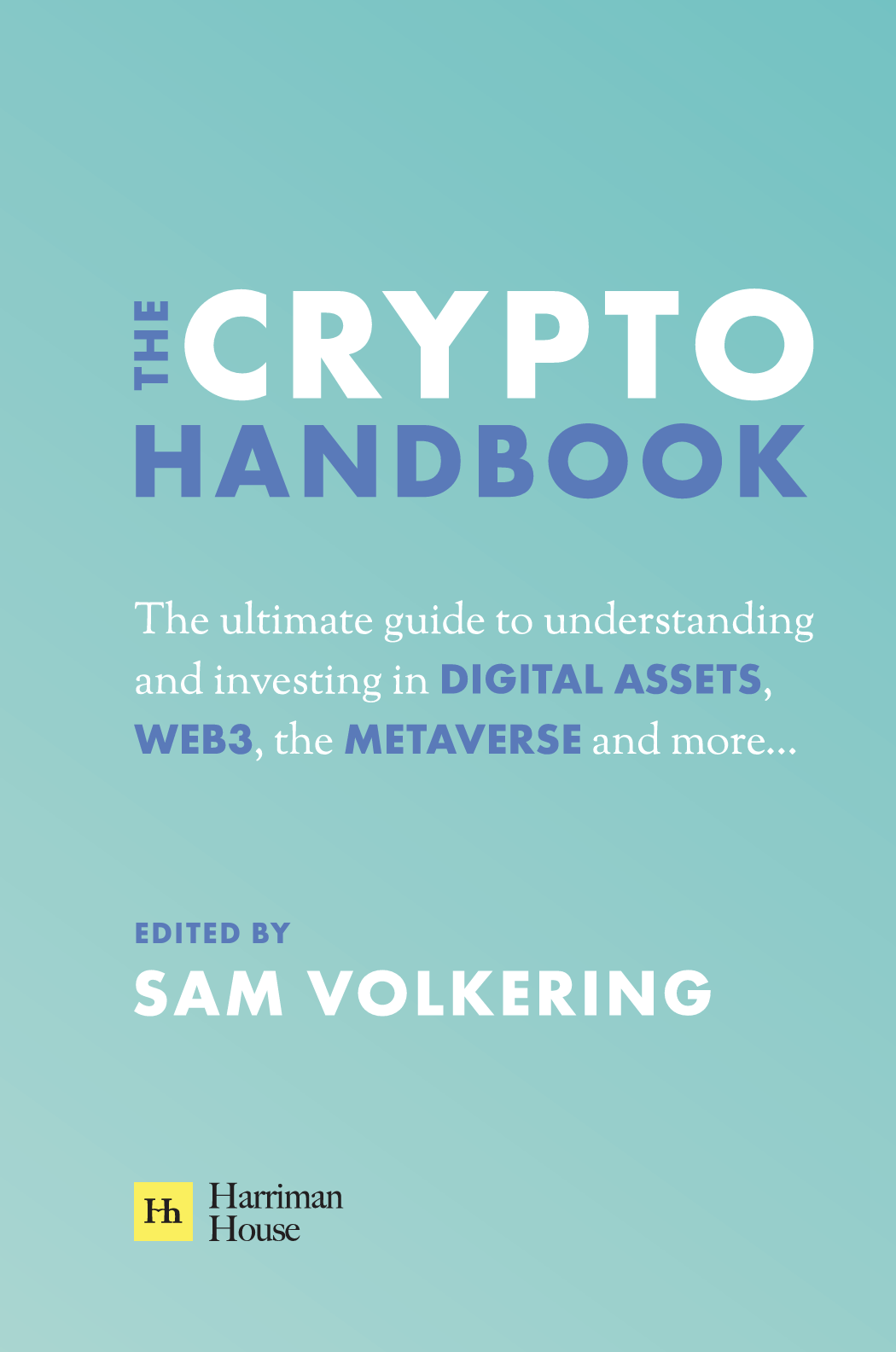Your October issue of Small Cap Investigator
26th October 2023 |
- US Patent: US-11767034-B2
- Big breakthroughs
- Buy List update
- Inside the lives of James and Sam
- Crypto Corner
- Reader Questions & Answers (Q&A)
- What else we’ve been looking at this month
US Patent: US-11767034-B2
Before we get into today’s new recommendation, we want to talk to you about something important, a change in how we do things here at Small Cap Investigator…
Unlocking the world
What you’ll notice in today’s recommendation and going forward is that it’s no longer just UK stocks that we’re focusing on here at Small Cap Investigator.
We know that most investors prefer to invest in domestic markets. There’s a relative feeling of certainty investing in companies that exist in the same country you live and invest in. Also, stocks priced in the domestic currency also take out a lot of cost and confusion around currency conversions.
In fact, research from 2021 suggests that 64% of all UK investors have more then 25% of their portfolio invested in the UK. Nearly half had more than 50%. That’s a pretty heavy domestic bias.
However, as we’re all very aware, there are incredible companies from all corners of the world that investors can look at.
What we’ve also learnt from our experience in the markets is that certain stock markets do lean towards particular kinds of stocks.
For example, one of the biggest and potentially most lucrative themes for investors over the next few years will be around artificial intelligence (AI), automation, robotics and the convergence of AI systems into every industry on earth.
The “AI” theme is big and strong, plus there’s a huge (and growing) number of companies you can invest in to potentially make big returns from.
The only thing is that they don’t all exist on the London Stock Exchange (LSE). In fact, not many exist on the LSE at all. What we know is that a huge number of these small, exciting, game-changing companies are listed in the US.
So, after much discussion and consideration, we’re changing the universe of stocks we look at here at Small Cap Investigator to include small-cap stocks listed over the pond in the US as well. We wouldn’t be doing you justice to not be looking at and recommending AI stocks just because they’re listed in the US.
We are widening our catch net so that we can hunt down the best small-cap companies for you here in the UK and over in the US. And right now, that focus is on small-cap AI and AI-related companies.
Which is where our next recommendation comes to you from.
US Patent: US-11767034-B2
On 26 September 2023 a new patent was granted and published in the US.
It goes by patent number US-11767034-B2 and the title of the patent reads:
System and method of computation acceleration for autonomous driving systems
At first glance, this patent doesn’t scream “artificial intelligence” off the bat. It is, however, the newest piece of the puzzle for a tiny, $16 million marketcap AI-powered company trading on the Nasdaq exchange in the US.
This isn’t the only patent the company has either. In fact, there’s 15 other patents in its war chest helping the company to protect its intellectual property (IP) and its market advantage. Thirteen of those patents have been granted in 2013.
This is a company quietly building a moat around its technology – both hardware and software.
Patent US-11767034-B2 protects the way in which this company processes data and creates an action from its AI-powered systems.
Other patents include how its systems see an environment and respond according to objects and obstacles that exist around the AI-powered machines.
Yet the company itself is not a pure-play AI company. It’s an industrial machine company that’s developing autonomous systems and an AI-platform for industrial use.
Things like forklifts, cargo movers and warehouse tow-tractors are the kinds of vehicles this company is turning into smart, autonomous machines. Its AI-powered platform helps humans and organisations use these machines and deploy them in places like warehouses, safely and efficiently.
Some examples of the machines it’s turning into self-driving ones includes the BYD forklift, Columbia Stockchaser and Motrec Tugger.
 Source: Cyngn
Source: Cyngn
So, who is this company?
Well, as you can probably tell from our source reference in the picture above, we’re talking about a company called Cyngn Inc. (NASDAQ:CYN).
Your latest Small Cap Investigator recommendation…
Cyngn is an autonomous vehicle developer. The company is traded on the Nasdaq with a market cap of just $12.9 and a stock price of just 34 cents.
The company turns industrial machines like those above into AI-powered, “smart” vehicles. But what sets Cyngn apart is its primary technology, known as the DriveMod Kit.
The DriveMod Kit can be installed on regular human-operated industrial machines. That means machines that were manufactured and delivered with human operators in mind, but which can now be turned into self-driving machines.
You see, the BYD forklift, Motrec Tugger and Columbia Stockchaser are all vehicles that are normally driven and used by humans. You’ll find these in warehouses across the world. And you typically find a person in the seat.
Here’s what a regular Stockchaser vehicle looks like.
 Source: Columbia Vehicles
Source: Columbia Vehicles
Here’s what the Stockchaser looks like when a DriveMod kit is installed.
 Source: Cyngn
Source: Cyngn
DriveMod is a retrofit device that can be bolted on to these existing vehicles, turning them from human-powered to fully self-driving and AI-powered. It means of the hundreds of thousands of industrial vehicles sold every year, there is the potential to turn them easily into autonomous AI-powered vehicles.
Sometimes describing how something like a self-driving, lifting and stacking forklift or cargo carrier works doesn’t do the technology justice.
Sometimes the best way to appreciate how game changing this tech can be is to see it. We strongly suggest getting a feel for what DriveMod can do in turning something like a forklift autonomous – you can do that by checking out the link here.
What Cyngn has been able to assess through its pilot programmes and testing is that converting a forklift to self-driving can increase productivity by 33%. Considering the rising cost of labour worldwide, along with shortages of labour and seemingly endless striking labour forces, the idea of autonomous systems is become more and more attractive to businesses.
From R&D to commercialisation… to a takeover?
What underpins the self-driving hardware is Cyngn’s Enterprise Autonomy Suite (EAS). There are three pillars to this “AI Platform” as the company refers to it as.
- The autonomous DriveMod hardware system
- Cyngn Insight control centre which provides all the software and interface to manage the autonomous fleet
- Cyngn Evolve which is the backend data, analytics, simulation and machine-learning tools.
This EAS is provided as a subscription licence per vehicle. The company also expects to generate revenues from deployment of the DriveMod Kit.
Financially, Cyngn is now in the process of coming out of R&D (research and development) mode and moving towards legitimate commercialisation.
This is evident from its second quarter of 2023 earnings release.
For the six months ending 30 June 2023 the company had a total of $1.5 million in revenues. This is compared to the same period in 2022 of $0 in revenues.
Now as good as this is, and we do expect further growth in revenues, it should be noted that the company still makes a loss. And the loss widened from 2022.
Loss from operations in six months to 30 June 2023 was $13.1 million. Again, this was an increase from $8.4 million in 2022.
The company does have $23.8 million in current assets, $12 million of that in cash and short-term investments.
While this is still a precarious financial position to be in, there’s some light at the end of this tunnel. It comes down to two announcements, one from 27 July and the other on 26 September 2023, the same day its patent was granted.
Cyngn announced in July that it had signed a new customer, a “Fortune 100 Heavy Equipment Manufacturer.” This was followed up in September with, “Paid Deployment with Fortune 100 Heavy Equipment Manufacturer in North American Facility.”
Now it doesn’t take too much to have a guess at what company it’s talking about here.
The Fortune 100 only has two heavy equipment manufacturers in it.
Those are the $110 billion and $132 billion heavy machinery giants, Deere & Company and Caterpillar Inc.
While Cyngn hasn’t named the “Fortune 100” company, we can’t see how it can be anything else than one of those two. The only other option is that the company is lying to the market. Which we would doubt.
Further evidence that it’s likely one of those two is in the announcement, where the company says DriveMod was deployed “… to a facility that has manufactured over one million machines since it opened…”
Not a lot of heavy vehicle companies outside of Deere and Caterpillar have the capacity to manufacture a million machines.
This initial deployment is paid, which means the tech works, and the Fortune 100 company is happy to pay for it. The aim from Cyngn’s perspective is to then lead to more paid deployments. Up to as many as 50 of the company’s other sites have similar towing applications.
If this turns into something bigger, then we see a lot of upside for Cyngn. Furthermore, this makes Cyngn an attractive takeover target if this deployment goes really well.
With Cyngn’s market cap at a tiny $12.9 million, buying the whole company would be like pocket change for companies as big as Deere and Caterpillar. Deere has about $4.7 billion cash at hand and Caterpillar has about $7 billion.
That aside, the company is likely to look to need to raise capital in the next year should revenues not be sufficient to maintain operational profits or at least drastically reduce the cash burn.
That is one of the risks that faces Cyngn. As a company that until the last six months hasn’t made any revenues and has been in R&D mode, the stock price has certainly felt the brunt of the market.
Cyngn went public in late 2021. As a growth company with no revenues, it was only downhill from there.
The stock price traded up near $8 after its initial public offering (IPO) only to crash lower (with most of the market) in early 2022. The stock did then pop higher on the announcement of the release of DriveMod, and it was even able to raise $20 million at $3.10 in late April 2022.
But the stock quickly fell out of favour again. So, if $20 million at $3.10 looked good, then the price now, at just 42 cents, must look like phenomenal value.
Of course, there’s the risk that the company can’t continue to grow revenues, that its deployment with the Fortune 100 company doesn’t lead to more orders and deployments, and that it needs to go to market to raise capital and the market doesn’t want to give it.
These are factors that could easily see the stock break lower through its 35 cent 52-week low. But we think the potential rewards with Cyngn outweigh the risk.
The speculation around a possible takeover isn’t something we’d be looking for out of this play. Due to the size of the company and the fact that capital requirements are still ongoing outside of substantial revenues, we wouldn’t expect much of a takeover premium to apply here.
The risk is still evident around the financial position of the company. But, we think that with the Fortune 100 deployment and with another recent partnership with Arauco (a supplier of products to brands including IKEA and Sauder Woodworking) there’s evidence Cyngn has the tech and capability to increase sales and deployments.
This is one of those asymmetric risk plays we love. The fact the company now has paying customers, one of which is (probably) either Deere or Caterpillar, makes this an exciting stock to invest in.
We think Cyngn’s stock price woes may just be behind it now – and at 34 cents, the stock price is literally pennies on the dollar.
Here’s a company with autonomous tech, underpinned by AI, with a huge suite of patents to protect its IP, that’s already deploying its tech with what we speculate to be either Deere or Caterpillar. A company that for the first time has substantially moved the needle on revenues in 2023, and that is now looking like commercialisation of its tech is within reach.
The possibility of a takeover added in the mix means we think now is a great opportunity to invest in the US-based company with significant upside potential.
Buying instructions
Cyngn Inc. (NASDAQ:CYN) trades on the Nasdaq in the US with a market cap currently of $12.9 million and a stock price of 34 cents.
Average volume in the stock is around 250,000 units per day, so it’s not completely illiquid, but there’s a chance the stock might jump on our recommendation. Please stick within buy limits to ensure you’re not paying too much for the stock.
Although US based, we’ve checked on major brokers like Hargreaves Lansdown an Interactive Investor, and CYN is available through those platforms.
Action to take: BUY Cyngn Inc (NASDAQ:CYN). Current price 34 cents. Buy up to 48 cents.
Big breakthroughs
The price of batteries is now fast approaching a key tipping point that should supercharge the transition to electric vehicles (EVs).
The price of lithium-ion battery cells fell below $100/kilowatt hour (kWh) in August – a 33% fall from March 2022 and an 8.7% month-on-month drop, according to energy analytics firm Benchmark Mineral Intelligence. Prices are now down 80% in a decade.
This is a big deal, make no mistake.
Battery pack prices at the $100/kWh mark have long been seen as the holy grail for EV manufacturers.
At this level, EVs effectively reach price parity with fossil fuel-burning vehicles, not accounting for subsidies. This corresponds to a cell price of around $80/kWh.
Below this level, of course, automakers should be able to make and sell mass market EVs at a cheaper price (and at a better margin) as comparable internal combustion vehicles.
Benchmark said the recent decline can be attributed to the downward price trajectory for the majority of raw materials used for cell manufacturing, significantly reducing costs for producers.
Lithium prices have more than halved since the start of 2023, while cobalt sulphate prices are now at pretty much record lows. Nickel prices, too, are in decline, dropping 25% so far this year.
This is wholly good news for the transition to EVs and comes after the pandemic and supply chain issue actually lifted battery prices over 2021-2022.
What’s interesting to note is that Benchmark’s prices are a global average, indicating that the downward trend of cell prices is observed not just in places like China, but in Western markets, too.
They are also weighted average prices, not actual prices. The largest purchasers of lithium cells such Tesla will likely be paying prices at the bottom of the average not the top.
They also come amid a backdrop of high electricity prices in Europe and increasing labour costs in the US, which will be certainly increasing cost pressures along the cell manufacturing supply chain – which makes you think that prices have even further to fall.
No wonder vehicle OEMs such as Renault and Ford have publicly announced targets of $80/kWh by 2030, while BloombergNEF predict prices to fall to $58/kWh by the end of the decade.
Certainly, continued investment in R&D alongside capacity expansion across the supply chain will help to improve battery technology and reduce costs over the next decade.
Possible routes to achieve lower prices could be through the adoption of next-generation technologies, such as silicon and lithium metal anodes, solid-state electrolytes and new cathode material and cell manufacturing processes.
The drop in battery prices could also have implications for other technologies, including for solar and wind installations that need to store excess energy during periods of overproduction.
This is good news for the electrification of transport and the use of batteries for energy storage.
The clean tech revolution continues apace.
Buy List update
Ashtead Technology Holdings PLC (AIM: AT)
Subsea equipment rental company Ashtead Technology Holdings, recommended at 374p in the July issue of Small Cap Investigator, has risen around 10% over the last month to trade at 466p at the time of writing, putting it 24% up in the model portfolio.
Ashtead has a history supplying subsea services to the oil and gas sector but has diversified into the fast-growing offshore wind market.
In early October, the company reported significant financial improvements in its first half, including a 57.1% year-on-year increase in revenue to £49.8 million that was buoyed by 74% growth in offshore renewable revenue (accounting for a third of the total) and 50% higher offshore oil and gas revenue (two-thirds of group revenue).
Gross profit grew faster than revenue, up almost 69% to £39.3 million, taking the gross margin to 78.8%.
Chief executive Allan Pirie said the firm’s strongest ever set of interim results were thanks to “continued positive momentum through the first half of 2023, with the group benefiting from our strategic investment in people and equipment, together with further increases to both utilisation and pricing”.
Although growth is expected to moderate in the second half, after the “unseasonal” strength of the last year’s final quarter, “market fundamentals remain strong” and the full-year outturn is now seen well ahead of the board’s previous guidance, added Pirie.
Increased activity offshore and the emergence of the energy trilemma, a three-way push-pull of energy security, affordability and sustainability, are playing firmly to Ashtead’s strengths.
The stock remains a HOLD while it trades above 395p.
European Metals Holdings (AIM: EMH)
At the time of writing, European Metals Holdings is trading around 33p, 1% up in the model portfolio, although the stock has fallen 8% over the last month.
Lithium stocks in general have been smashed in recent weeks after a slew of investment banks downgraded their lithium price outlook.
UBS and JPMorgan got the ball rolling earlier in October when they cut their near-term forecasts by 10-30% over FY24-26 and 37-47%, respectively. Last week it was Bank of America’s (BoA) turn. BoA said the outlook for the metal used in batteries is “challenged”, warning that the lithium market will move from adequately supplied to oversupplied in 2024 and 2025. BoA reduced its outlook for lithium prices by 20% to 50% from 2023 through 2025.
Meanwhile, the spot price of lithium carbonate in China has tumbled to $23,850 per tonne, down 70% from its peak last November.
The banks in general have cast a slightly withering eye on China, where macroeconomic headwinds are pressurising electric vehicle (EV) sales, and a supply response that is thus far meeting demand.
Unfortunately, the voices of these investment banks carry weight, even if they hold far from a consensus view. For instance, Benchmark Mineral Intelligence has global lithium demand topping 1.5 million tonnes by 2028 – up from 900,000 tonnes this year. Benchmark Minerals, in an 11 October report, said that setbacks for any significant lithium project could throw a narrow market surplus into a deficit. Similarly, analysts at Morningstar are forecasting a price rebound as strong demand from EV and energy storage systems outpaces supply.
I certainly side with the latter views, though that doesn’t change the fact that current sentiment is against us. However, we must remember that European Metals’ Cinovec lithium project in the Czech Republic is set to be a significant pure lithium producer in the EU – a region where there is little domestic raw material production and a region with a huge demand as it battles to achieve a carbon-neutral future.
Nestled on the Czech-German border, Cinovec – which has a 25-year life – is located on the doorstep of some of Europe’s biggest automakers and chemical producers.
Cinovec is being developed by Geomet, a 51/49% joint venture between state-owned CEZ and EMH.
The stock remains a BUY below its 45p buy limit.
Central Asia Metals (AIM: CAML)
Central Asia Metals, a mining company with operations in Kazakhstan and North Macedonia, has slumped 24% over the last month to 155p at the time of writing, still leaving it 44% underwater in the model portfolio.
The group’s principal business activities are the production of copper at its Kounrad operations in Kazakhstan and the production of lead, zinc and silver at its Sasa operations in North Macedonia.
The stock continues to take direction from a weak copper market, where prices have tumbled to the lowest in nearly 11 months amid tepid demand in China and rising stock levels held at the London Metal Exchange.
Operationally, CAML is performing well. The AIM-traded firm said on 10 October that Kounrad’s copper production for Q3 was 3,661 tonnes, cumulating a nine-month output of 10,377 tonnes, while copper sales totalled 3,903 tonnes.
At the Sasa mine, the third quarter saw 199,085 tonnes of ore mined and 199,427 tonnes processed, totalling 595,319 tonnes mined and 596,099 tonnes processed over nine months.
Looking ahead, Central Asia Metals said it was on a steady path to reach its full-year guidance for 2023, with copper production expected to fall between 13,000 and 14,000 tonnes, zinc in concentrate anticipated to be within the 19,000 to 21,000-tonne range and lead in concentrate projected to be between 27,000 and 29,000 tonnes.
“We are pleased to report another solid period of base metal production during the third quarter, and we remain on schedule to meet our full year guidance,” said chief executive officer Nigel Robinson.
“Importantly, this production has been delivered safely as we have reported zero lost time injuries at both operations.
“During the third quarter we reached the impressive milestone of having generated over $1 billionn in revenue from Kounrad in our 11 years of operations.”
Robinson described it as a “fantastic achievement” from the Kounrad team, especially given that the copper was all produced from waste material.
“As we look towards the end of the year, we will further progress our investments at Sasa, as well as complete construction and commissioning of our Kounrad Solar Power Plant, which should start generating electricity for us before the end of 2023.”
The stock remains a BUY under 310p.
Foresight Sustainable Forestry Company (LON: FSF)
Foresight Sustainable Forestry Company, which invests in UK forestry and afforestation assets, has fallen 11% over the last month to 72.81p at the time of writing, putting it around 33% down in the portfolio.
The UK forestry and afforestation investment company has made three property acquisitions in Scotland totalling £8.3 million pounds. Foresight Sustainable Forestry said that, following the acquisitions, its portfolio has increased by 819 hectares, to cover a total area of 12,545 hectares across 68 properties.
The funds used were part of the company’s revolving credit facility which is now £10.4 million drawn. These properties support the company’s 2024-25 planting programme and no further material additions to the portfolio are currently expected within the calendar year, the board said.
Foresight Sustainable Forestry has struggled in the face of challenging macro conditions, though forestry assets are in demand and the long-term outlook is sound. The weak price should certainly appeal to new investors.
As such, it remains a BUY under 150p.
Global X Lithium & Battery Tech UCITS ETF (LON: LITG)
Global X Lithium & Battery Tech UCITS ETF has declined by 11.75% month on month to around £7 at the time of writing, 28% below our £8.96 entry price.
The ETF invests in the full lithium cycle, from mining and refining the metal through battery production. Some of its top holdings include Albemarle, Panasonic, BYD Co., Tesla, Livent Corp., Piedmont Lithium and Standard Lithium.
It should certainly benefit from heavy demand for lithium. After all, without lithium, we can’t build EVs or have the green future that countries are demanding.
As said earlier in these pages, the global weighted average price for lithium-ion cells has now dropped below $100 per kilowatt-hour, or kWh, due to falling raw material prices, which should certainly stimulate demand for EVs.
LITG looks considerably oversold. As such, it remains a BUY.
Newmont Corporation (NYSE: NEM)
At the time of writing, Newmont Corporation, the world’s largest gold miner, was trading around $38.30, down 5% on the month. The stock is now 41% below our $65.39 entry point.
However, the good news is that Newmont has finally begun resuming operations at its Peñaquito mine in Mexico, after reaching a definitive agreement with striking workers last week.
Unionised employees at Mexico’s largest gold mine downed tools for over four months, costing Newmont millions of dollars a day.
Peñasquito, about 770km northwest of Mexico City, is Newmont’s third-largest mine by sales. It brought in $2.8 billion in sales in 2022, down 17% from the prior year because production lagged.
It will now take several weeks for the mining operation to ramp up to stable production levels.
Elsewhere, Newmont’s proposed A$26.2 billion takeover of Australia’s Newcrest Mining is set to close in early November after Newcrest’s shareholders approved the scheme.
Once complete, the combined business will feature ten tier-1 operations. The combined business is expected to generate pre-tax synergies of $500 million a year, expected to be achieved within the first 24 months, while also targeting at least $2 billion in cash improvements through portfolio optimisation in the first two years after closing.
Newmont remains a BUY under $100.
DS Smith (LON: SMDS)
Recycled-content paperboard and packaging producer DS Smith has fallen 6% over the last month from to 264p at the time of writing, now just around 16% below our entry price.
DS Smith is investing over €13 million at its Ghimbav production site in Romania as part of its growth strategy in East Europe.
The investment will support DS Smith’s ongoing plastic replacement projects with customers, increase capacity by over 20%, and boost productivity, the company noted.
The stock remains a BUY though we continue to watch market dynamics closely.
Saietta Group (LON: SED)
Saietta came out of a suspension now that it had finally got its full-year results in order. This had them readmitted to the AIM and trading again. Except the stock immediately took a hit as the company explained in its operational update a decline in revenues, earnings before interest, taxes, depreciation and amortization (EBITDA) and a widening loss.
The market rightfully didn’t take it well, and Saietta traded down under 17GBp shortly after. We think that was an overreaction. And while the stock certainly has had its fair share of troubles in the last year, the fact remains that the company has a strong development agreement with what it refers to as a leading Indian original equipment manufacturer. This is a valuable deal for Saietta, and we think it still provides long-term potential for the company.
The stock has bounced back off that low after its readmission to around 22GBp. It has a way to go to recover back to our entry levels, but we will stick with the stock for the time being.
Rockfire Resources (LSE: ROCK)
Although Rockfire is still in a trading suspension, pending the release of an admission document, or its reverse takeover of Emirates Gold and Emperesse Bullion doesn’t proceed, things are still moving forward at the Molaoi site.
The company is commencing a drilling programme to support its inferred resource, in order to proceed with the feasibility study in 2024. This isn’t expected to deliver increased resources but merely to support what it already has data-wise on the project. But that doesn’t rule out an improvement if that is the case.
We await to see the action in the stock once the reverse takeovers are complete. If it does, we expect to see the stock pop higher, if it doesn’t complete it might hit the stock price in the short term, but we’re still confident that Molaoi is a great resource, particularly for its germanium and gallium potential.
Sprott Uranium Miners (NYSE: URNM) and Yellow Cake (LON:YCA)
We are into a healthy profit for both of these uranium positions, with Sprott showing a 28% profit and Yellow Cake showing a 27% profit.
We were into these both in early 2022, before the uranium and nuclear story really started to find its feet in the mainstream.
While it hasn’t been smooth sailing, the last six months have shown that being ahead of a trend can pay off with some patience. And energy markets, as volatile as they are, show that rationality can sometimes win out.
That’s the case with nuclear. It is the only way that our world moves towards a cleaner and greener energy future. As such, we don’t see the demand for uranium or for nuclear technology slowing down anytime soon.
These both have now moved over their buy limits and, as such, have moved to a hold recommendation in our buy list.
The nuclear story is just warming up, and we’re excited about what the rest of 2023 and into 2024 have for our uranium plays.
Inside the lives of James and Sam
Sam:
Banks.
Just banks. That’s all I seem to have been dealing with in my life over the last month.
I guess I should have expected that when moving to a new country. But I didn’t expect it to be this painful.
I moved a little while ago now. With hindsight, I should have got onto this sooner. But I didn’t need to, until now.
To give you the rundown on what’s been going on…
I’ve got accounts with Wise (LSE:WISE). Wise is handy because it allows for multi-currency accounts. That means GBP, EUR, AUD, USD – and others if you need them.
You can exchange across currencies from within the app, easily, quickly and compared to banks, it is a helluva lot cheaper. It also has a Visa card attached to the accounts.
This allows you to pay in the currency wherever you are at the time. It is a very slick, impressive set-up. It’s how banking should be in the modern world.
But my time this month hasn’t been occupied because of Wise. It’s because of a national system of payments and banking known as “Multibanco” or “MB”.
This MB system is an interbank payments system with Portugal. It allows for payments through the app “MB Way” and even for bill payments to be made at ATMs.
It seems quite handy and useful – except if you don’t use traditional banks or banks that partner with MB, which are typically all the legacy traditional banks.
Here’s a real-world example. I’m trying to get car finance set up as I’m looking to lease a new car. The old school idea of buying a car outright might seem like the way to go. However, when you factor in depreciation and initial cost vs. leasing and the ability to cycle the lease to a new car after time, it works out well to use some of the handy finance structures when looking at new cars.
So to get that finance set up, I provided my Wise account details.
Nope. No good. Wise euro accounts are based out of Belgium. The finance companies in Portugal need a Portugal bank IBAN (international bank account number). So I had to set up a Portugal bank account.
Ok, so be it.
I set up an account with Nickel. Nickel is one of the “neobanks” in Europe. This is a French bank that was bought by BNP Paribas in 2017. It’s part of a big, legacy banking institution.
It was a Portuguese IBAN, Portugal account, all good.
Right? Nope. Not all good.
A Portugal bank account, yes. But there was no physical branch for the bank – and it wasn’t one of the approved banks from the finance provider.
Furthermore, even though it was completely Portuguese, it wasn’t compatible with the MB system.
So, I set up another account. This time with Openbank, which is part of the Santander Group. It has a Portuguese site and is part of a big, multinational bank. Except this account, although set up through its Portugal site, gave me a Spanish IBAN number.
By this stage, I’ve come from the UK, managed to get a Belgian, Portuguese and now Spanish IBAN and account, and yet none of them could be used with the MB system or be approved through the finance provider.
So… I headed down to the Crédito Agrícola bank, a through and through Portuguese legacy bank. This would definitely work with MB, with the finance providers. No worries.
Well, not really. At the physical branch I was told I needed a list of documents the length of my arm (all printed off). I was told I must also make an appointment to open an account. And that appointment couldn’t be made for at least a week.
… deep breath taken…
I’m now onto my fifth bank: Best Bank. Portuguese IBAN, check. Physical branch, check. MB system compatible, check. I’m not yet there and the account hasn’t yet been approved (two to three business days). But it’s my last great hope.
I’m telling you this for a good reason.
Banking should not be this hard. It shouldn’t be so difficult just to open an account to deposit money. That’s all I want to do: put money in an account so I can function in the system in the country I live in.
To say the financial system is bloated, convoluted and complicated is an understatement. People ask me why I’m so positive and optimistic about what bitcoin and crypto can do for the world.
This is why. Because banks suck. The traditional system is broken. And it is ridiculous as to how complex and complicated it is. Strip it all back. Break it down, start again… we can only hope.
James:
I’ve been going to football all my life, but never once have I ever watched as a fully-fledged member of the Prawn Sandwich brigade – until one Sunday earlier this month, that is.
On Sunday 8 October, you see, I watched the top-of-the table Arsenal-Manchester City clash from a corporate box in the Clock End of the Emirates Stadium.
My partner had been invited through her work, and I was there very much as her Plus One. This meant that, unlike her, I had a free shot at just sitting back and enjoying the whole experience rather than having to do much in the way of networking, schmoozing or small talking with the other box occupants.
(In fact, my instructions, uttered to me moments before we entered Box 114, were remarkably simple and to the point: “Enjoy yourself but just don’t embarrass me, please. That’s all I ask.”)
As gigs go, it certainly wasn’t a bad one, I must confess.
We arrived a full hour before kick-off and it was immediately obvious that, though it was still a match-going experience, it was certainly different from my usual experience of watching another London club across town.
It was football, certainly, but not quite as I knew it.
Entering into the box, we were instantly welcomed with a complimentary official match programme and glass of champagne, before being taken to our table further inside. From there we enjoyed a series of delicious dishes and had access to a complimentary bar that stocked premium beers, wines and soft drinks.
The box felt more like a private members’ lounge/bar but was also extremely relaxed and welcoming – in large part to the extremely friendly hosts.
Soon it was time to take our padded seats right outside the box for the big match. The view was something to behold and the atmosphere, it must be said, was electric – which is not something I’ve said before on previous visits to the stadium.
Though the game itself was no classic, it was certainly absorbing and it was hard not to be moved when Arsenal scored in the final minutes to win the game 1-0. Though my own club loyalties prevented me in joining in, fans all around us immediately started singing Arsenal’s North London Forever anthem. The stadium was bouncing.
From there it was back inside the box where we chatted to the other box occupants over another glass or two before leaving the stadium an hour or so later.
It was certainly a brilliant experience – which I can safely say everyone in the box seemed to enjoy. The box hosts – who worked for one of Arsenal’s main sponsors – hopefully got their money’s worth, too.
Certainly, I could see why client entertainment is one of the oldest techniques when it comes to getting business done. The box hosts expertly schmoozed the box attendees, no doubt with an eye to develop relationships with current and/or prospective customers and to help to generate more business.
Of course, return on investment can be difficult to calculate when entertaining clients – it’s not just about what clients spend immediately but about building a relationship with them for months and years to come. And I would guess that, on that metric at least, it was very much job done by our hosts that day.
My partner and I both walked away from the stadium with only positive thoughts about the brand in question, no doubt. We’ve both already mentioned to other people about our day in the box being treated by the brand in question to such great hospitality – which is all part of the soft networking power, I guess.
In particular, of course, my girlfriend had started to built a level of rapport with the hosts that would have been hard to replicate in a more corporate setting, certainly.
As for me, I was pleased to hear, on walking back to Highbury & Islington tube station, that I hadn’t failed in my mission. I’d hugely enjoyed myself and, I’m pleased to add, my shins had remained the proverbial kick-free zone.
Crypto Corner
A false tweet gives us a preview of the next bull cycle
Want to see what making $50 billion and losing it inside an hour looks like?
Let me show you.
 Source: Google
Source: Google
That’s an interesting chart, but there’s a gigantic spike that’s clearly an abnormality.
It is, however, what $50 billion up and about the same straight back down looks like.
Bitcoin’s price early on Monday 16 October shot higher from about $27,700 to (on some exchanges) over $30,000. It happened in the space of about 30-45 minutes, then came straight back down.
An 8.3% spike and fall like a light switch flicking on and off.
This isn’t a data error from the chart. It really happened. It’s not uncommon in crypto, but at the same time, we typically only see these massive spikes in a bull market.
The question remains, though: what caused this mega move?
The Coinbase intern is getting fired
On Monday 16 October, Cointelegraph posted a “BREAKING” announcement on Twitter.
It read, “BREAKING: SEC APPROVES ISHARES BITCOIN SPOT ETF.”
The tweet is long gone now because the company deleted it. But thanks to the internet remembering everything, we know this was what the tweet said.
That’s what made bitcoin’s price shoot higher.
But then, why did the price come screaming back down?
Oh, I should have said… the tweet was wrong. There was no bitcoin spot-priced exchange-traded (ETF) approval. Cointelegraph had jumped the gun. A false start. A lie.
The memes on “Crypto Twitter” since then have been brilliant. And it’s now widely referred to as the “Cointelegraph Intern” having pushed out the tweet so he could front-run the market.
All wild assumptions and just a part of “Crypto Twitter” antics.
However, there’s some meat behind this somewhat comical event. This is the clearest indication of what the market could do when that approval comes. A preview of just how coiled the market is and its ready to be released.
In the days since, bitcoin’s price has been climbing higher – breaking over $30,000 and over the top of that Cointelegraph spike. Our view is that this is because the market is starting to see just how significant the capital flows from US ETFs could be.
I know a lot of people think that bitcoin spot-priced ETFs might not be good for bitcoin. And there’s a decent argument as to why that might be.
With spot-priced ETFs, the fund has to own the underlying asset, in which case we’re talking about actual bitcoin. That means as the fund gets bigger and bigger, it will have to hold the corresponding amount of bitcoin.
For example, let’s say BlackRock’s bitcoin ETF gets approved. Let’s say it ends up being $25 billion in size. That’s not a crazy number either. For comparison, the iShares Gold Trust ETF has $24 billion in assets under management (AUM).
With bitcoin at $30,000 that means the ETF would need 833,333.33 bitcoin to underpin the value of that ETF. Currently there are 19.52 million bitcoin in circulation. That means it would need to buy 4.2% of all bitcoin currently in supply.
Ok, that’s likely possible. But at the same time, just a couple of months ago ARK Invest reported that 70% of all bitcoin remains unmoved for a year or more.
Of the 19.52 million bitcoin that exist right now, only around 5.85 million are actively moving around – or are liquid. That means a $25 billion ETF for bitcoin would need to buy about 14.2% of the circulating liquid supply.
Now what if that demand for spot-priced ETFs is more than that?
Some of the names lining up for spot-priced bitcoin ETFs include BlackRock, Fidelity, Invesco, Franklin Templeton, WisdomTree, ARK Invest and a long list of others.
Combined, they currently manage tens of trillions in AUM. What if the demand for spot-priced bitcoin ETFs shifts towards hundreds of billions? Or a trillion dollars?
Let me tell you what happens: there isn’t enough bitcoin to go around. It’s that simple, so the demand for bitcoin skyrockets. Yet the supply remains constrained. I tell you right now, my bitcoin isn’t moving anywhere, is yours? Are you going to sell up into a market where BlackRock is looking to buy it up for its customers?
The expectation is that this is going to send bitcoin’s price astronomically higher. Everyone will have their price somewhere along the line, but I don’t expect much pause on the price until it gets up around the $100,000 mark.
And here’s why I say that: we know that most people who don’t own bitcoin come to the market when prices are peaking. We know that a lot of people will currently be underwater on their bitcoin buys, having come to the market in 2021 when bitcoin was topping out at $69,000.
So those people are unlikely to sell at a loss into a bull market. They’ll want a profit. How much profit? Who knows, but there’s a decent argument to think that $100,000 is a mark where, psychologically, people will really start to think, maybe I should sell up.
That’s not where I expect bitcoin to stop should this be the start of another bull market. However, it’s a level where I think a lot of people will tap out.
Of course, I could be way off the mark. Potentially, no one will want to hold bitcoin via ETFs and the market stalls, the price stalls and we stay around $30,000 for the next five years or… forever.
But I doubt it. It’s not my experience with how the market moves and how the cycles play out. I have no reason to expect that another cycle won’t behave in a similar way to the four previous ones.
So, what am I really saying here? Well, it’s simple, I think, if you haven’t got bitcoin now, you’re still not too late. You can own it outright and it’s easy enough to get on exchanges. Or you could wait for bitcoin ETFs to become available through your investment fund. Of course, by then you might be paying a heck of a lot more for it, but it’ll still be available at some point.
But I am convinced that another bull market is on the way, and we’re just now starting to see it get warmed up. And I’m expecting an exciting few months ahead for the entire crypto market.
Reader Questions & Answers (Q&A)
The new format of this publication is… interactive.
That means that we both encourage you to send in your questions.
Questions can be to either or both of us. They can be about stocks, a particular technology or industry, crypto, or a “boots on the ground” research mission.
Questions & Answers is a key part of the publication.
Given that we publish towards the end of each month, it may be difficult for us to tackle time-sensitive questions. It should usually be possible for us to address questions that are not time sensitive.
Please bear in mind that we can’t give personal advice. Also, if your question is related to anything operational, like how to change a password on your Southbank login or where to find a report, please get in touch with our wonderful customer services team.
When sending in your questions, please acknowledge you’re happy for us to republish it. Don’t worry: we won’t be using any names or initials, just the questions.
We can’t guarantee to answer all reasonable questions – particularly if we receive a huge number: however, we will do our best, and may follow up directly with you.
Please send them in: [email protected].
Question: Any clue about where I can buy KGRN? It’s not appearing on any of my broker accounts yet. Thanks, Kevin.
Answer: Earlier this month, we recommended you buy the KraneShares MSCI China Clean Technology Index UCITS ETF (LSE: KGRN) as soon as it started trading on the London Stock Exchange on 12 October. However, we’ve subsequently heard that the exchange-traded fund (ETF) is still not offered by the main online brokers. We’ve been in touch with KraneShares and the company said certain regulatory data relating to the ETF still needs to be made available to the main data providers. Only at this point will the ETF be available to trade via the main broker platforms. KraneShares tells me it’s working on this and expect the data to be ready imminently. The company will let us know as soon as it has news of a firm date – at which point we’ll let you know by way of an update. Thanks for your patience!
What else we’ve been looking at this month
James:
Will SBF, the former crypto titan, take the witness stand?
I’ve become near-enough hooked on the ongoing trial of former crypto billionaire and FTX CEO Sam Bankman-Fried. The 31-year-old is being tried on seven federal charges in the US, including wire fraud, securities fraud and money laundering after the collapse of his cryptocurrency exchange left thousands of FTX customers short by billions of dollars. He denies all charges.
Looking from the outside, it certainly seems that the first few weeks of the trial have been close to disastrous for the former crypto titan, with a parade of former friends, staff and business colleagues all testifying that Bankman-Fried took money from FTX for his own purposes.
At the moment, things don’t look good for him and much now might depend on whether his legal team sees it fit to allow Bankman-Fried – whose powers of persuasion once moved billions of dollars to his side – to speak for himself on the stand. Whether he testifies or not remains to be seen and though it is a high-risk strategy – as this article in Business Insider articulately states – it’s perhaps the only strategy he has left on the table.
The Fear and Greed Index shows stocks are seriously undervalued
Investing, as we all know, is often emotional and reactionary. This means that investor sentiment can play a huge role in determining stock prices. Broad sentiment trends can untether prices from value, pushing stocks higher or lower than they should be. Fortunately, there is a metric that can indicate how investor sentiment is influencing stock prices right now: the Fear and Greed Index.
Developed by CNN Business, this index is a compilation of seven different indicators that measure some aspect of stock market behaviour:
- Market momentum
- Stock price strength
- Stock price breadth
- Put and call options
- Junk bond demand
- Market volatility
- Safe haven demand.
It indicates how emotions influence the way investors pay for stocks, providing a window into whether stocks are fairly priced at any given point in time.
And right now, the stock market is showing levels of “extreme fear”. To put it bluntly, that’s hide-under-the-duvet levels of fear. But if you accept the logic that excessive investor fear pushes stocks lower, the reading shows that stocks right now are seriously underpriced.
The UK only has one coal plant left
You might not have noticed but the UK now only has one coal-fired power station remaining after Northern Ireland’s Kilroot Power Plant, operated by EP UK Investments, closed its last remaining coal unit on 1 October. As this article by Carbon Brief states, UK coal use is now the lowest it’s been since 1757, back when George II was king, William Cavendish was prime minister and the industrial revolution had not yet begun. A year earlier, Wolfgang Amadeus Mozart had been born in Austria. This leaves Uniper Technologies’ Ratcliffe-on-Soar plant in Nottinghamshire as the only operating coal power station in the UK – and that plans to close in a year.
Sam:
Milton hits the big stop button
I love a vintage video and they’re in abundance on YouTube. This one, from none other than Milton Friedman is a perfect, simple explanation of inflation and how to end it. It makes you realise that the situation the world finds itself in right now has a very straightforward answer. And the solution is also quite simple too. The only problem we face is that those in charge are more concerned about protecting their own backside than what’s actually best for the economy and for people.
Bitcoin but with the power of all the altcoins
On October 9, a new white paper was published titled, “BitVM: Compute Anything on Bitcoin”. I’ll be the first to admit that it’s not an easy read. And I think I’m still trying to get my head around it. But there are elements that seem significant. It might also be the case that this ends up being a significant publication to bitcoin’s future – if it all checks out and leads to an improvement for bitcoin. Time will tell, but if you’re curious and technically minded, it’s worth a read (several times).
Space with frickin’ lasers
Every time I hear about the use of lasers in our world, my mind instantly turns to that classic Austin Powers scene where Dr. Evil demands “sharks with frickin’ laser beams attached to their heads.” Of course, in the real world, we’re not quite there yet. However, we do have frickin’ lasers that can take down missiles, and now thanks to NASA research, frickin’ lasers for sending communications from space.
James Allen and Sam Volkering
Editors, Small Cap Investigator








